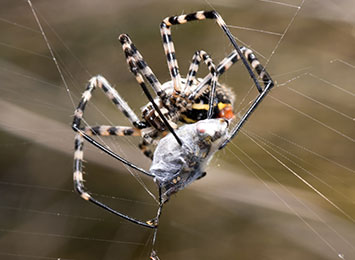Spider Pest Control
Signs of a Spider Infestation
The easiest way to spot a spider infestation in your home to look for their webs. Check the upper corners of any areas that tend to be dark and damp, as spiders enjoy those types of environments. Spiders build webs around insect thoroughfares, where they’re most likely to catch prey. You might see cobwebs around door frames, window wells, baseboard, storage containers and materials, or vent systems.
Different species of spider build different types of webs, but they all have several common characteristics. If webs fall, you may see them in clumps around the floor in basements, crawl spaces, or warehouses. Spiders also tend to build webs in areas where they won’t be disturbed, so look for them in out-of-the-way places.
Scientific Information
Scientific Order: Araneae
Common Spider Species in New York:
Common House Spider or American House Spider (Parasteatoda tepidariorum)
Barn Spider (Araneus cavaticus)
Yellow Garden Spider (Argiope aurantia)
Common American Grass Spider (Agelenopsis actuosa)
Sac Spider (Clubionidae, Miturgidae)
Nursery Web Spider (Dolomedes triton)
Wolf Spider (Lycosidae)
Crab Spiders (Thomisidae)
Cellar Spiders (Pholcidae)



